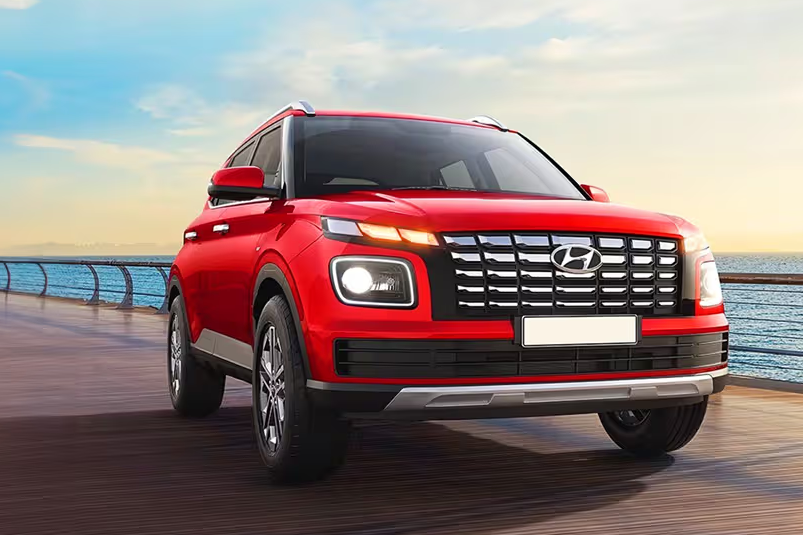
New Delhi: Hyundai Motor India has been underlining ‘premiumisation’ and ‘SUVisation’ as twin cornerstones of its strategy for the domestic market as SUVs now account for the sale of nearly seven in ten vehicles in its portfolio. But here’s the twist: first time buyers accounted for at least one in three vehicles sold by the company in the September quarter. And if you thought that these first timers would go in for lower priced hatchbacks, Hyundai’s experience would compel you to think again. Tarun Garg, COO and Wholetime Director at Hyundai said that in Q2 this fiscal, 36.5% of buyers were buying a car for the first time and that the percentage of first timers has increased over the years. In 2019-20, first time buyers accounted for 31% of all customers. “So our future prospects are good…we continue to attract first time buyers and these customers directly move to Venue and Creta . In Venue, the proportion of first timers is 42% while for Creta it is 28%. These customers are bypassing the hatchbacks and straightaway going to the bigger cars. This augurs well for us”.
The Venue starts at about INR 8 lakh and goes up to nearly INR 14 lakh while the Creta starts at about INR 11 lakh and goes up to over INR 20 lakh. Instead of primarily choosing vehicles which cost within the INR 5-6 lakh range, customers are obviously going in for premium features and willing to shell out more.
In any case, Hyundai’s success with selling SUVs to first time buyers bolsters its argument of the increasing premiumisation of the domestic passenger car market, despite a tough macro economic environment overall. Here are some other numbers to support premiumisation: Hyundai’s sunroof penetration in the April-September period this year was over 53% against 47.4% in the year ago period; every fourth vehicle sold by the company was an automatic in these six months versus 23.2% share of automatics in the same period last fiscal.
“What we are doing is adding more value to the customer so that efforts towards ASP increase continue. Unlike the competition – there was a lot of price war happening in the market – we were able to not join in and keep prices intact in H1 and in Q2. We believe the premiumisation strategy has worked for us and we will continue with it,” Garg said.
Hybrids, CNG, EV:
Will Hyundai introduce hybrids in India? MD Unsoo Kim referred to the Korean parent company having access to hybrid technology (in addition to other powertrain tech) but did not give a timeline for hybrids in India. The company is already on course to launch the first electric vehicle, Creta EV, in the last quarter of FY25 and has already introduced dual cylinder CNG technology in two of its models.
“HMC is very strong in the sale of hybrids globally, in the US and South Korean markets. HMIL has all access to all kinds to technologies and we are well positioned to launch models with hybrid powertrain in India, based on customer demand scenario. Currently we are monitoring customer preferences for powertrains,” Kim said.
CNG powertrain was introduced in the entry level SUV Exter and Garg said penetration of CNG in this model has already gone up to 28.4%. And every fifth NIOS is now selling with a CNG powertrain.
India hub for emerging markets:
Kim also reiterated that Hyundai India will become a strategic production hub for emerging markets, as the company plans on exporting vehicles to markets in the Middle East, Africa, South Asia, and Latin America. “We are seeing the domestic volume is increasing, demand is increasing. Also the market for exports is increasing. We have a very suitable product lineup for emerging markets,” Kim said.
He referred to the acquisition of the Talegaon plant from General Motors, which will come onstream from the third quarter of FY26. With this facility, Hyundai’s installed capacity will breach the one million unit mark. This plant will be crucial for Hyundai’s electric vehicle ambitions – biggest competitor Maruti is expected to also launch its first EV around the same time next year besides also helping it in boosting exports.
Sedans, hatchback recede
For Hyundai, two of the three vehicle segments – sedans and hatchbacks – continued to shrink in the September quarter as SUVs expanded. Sedans made up for just about 12% of sales and hatchbacks a fifth of the portfolio. The success of Hyundai in the SUV space has been noteworthy in recent years. In FY19, hatchbacks accounted for nearly one in two vehicles sold but their share shrunk to just about one in three by FY23.
In the same period, the share of SUVs nearly doubled to 44% and to about 50% by FY24. Through such turmoil, Hyundai has maintained its second position overall, with models such as Creta (introduced in 2016), followed by Venue, Aura and Kona. Sales in Q2 declined by nearly 6% year on year to 149, 638 units (158,772) but the fall in exports was steeper, at 17% to 42,300 units (51,005 units).















